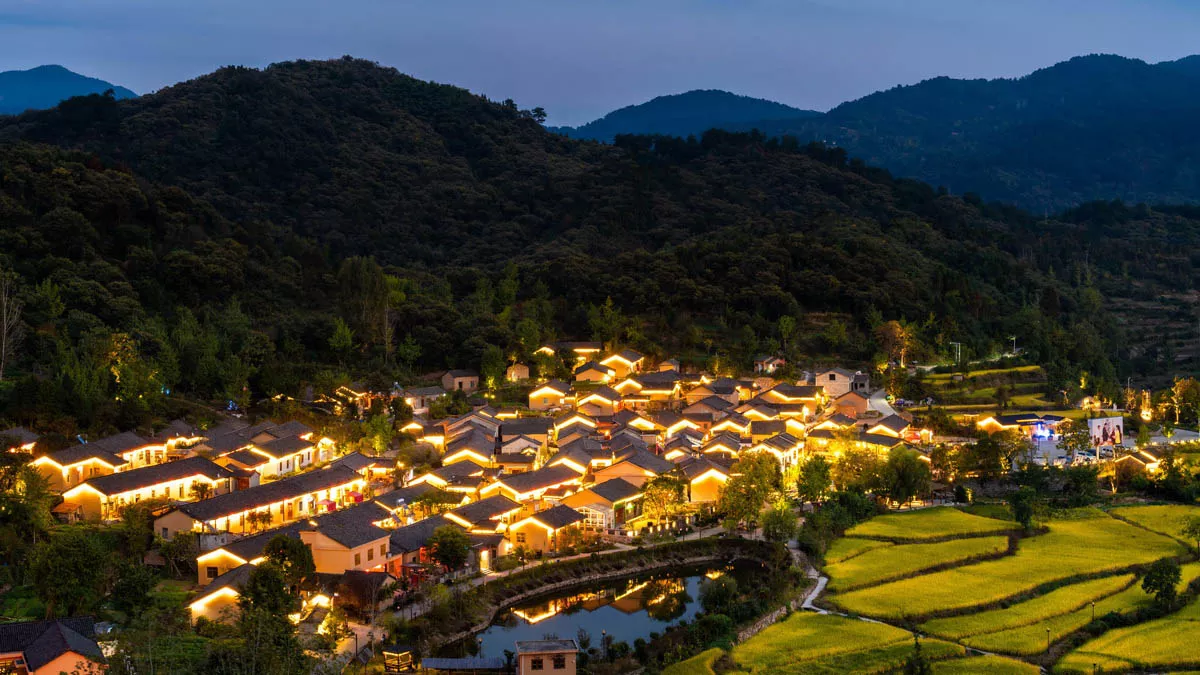- Product Knowledge
Lighting in the Rebuild and Renewal of Rural China
Introduction

In the tapestry of China’s rapid modernization, the rural heartlands often serve as both a testament to tradition and a frontier for development. While cities gleam with the lights of progress, rural areas are undergoing a transformation that hinges not only on technological advancement but also on fundamental infrastructure improvements. Lighting, a seemingly basic yet profoundly influential element, plays a pivotal role in this transformation. As rural China embarks on a journey of renewal, the enhancement of lighting infrastructure emerges as a critical driver of both economic growth and social well-being.
Historical Context of Rural Lighting in China
The historical landscape of rural China has long been shaped by traditional lighting methods, reflecting the agrarian lifestyle that characterized much of the countryside. For centuries, rural homes relied on oil lamps and candles, with daylight dictating the rhythms of life. These rudimentary lighting solutions, though integral to daily existence, imposed significant limitations on productivity and safety.

With the onset of industrialization, rural China began to experience the first waves of infrastructural change. The introduction of electricity to rural areas in the mid-20th century marked a turning point, albeit one that unfolded unevenly across the vast expanse of the country. Yet, despite these advances, the disparity between urban and rural lighting infrastructure remained stark, perpetuating a divide that impacted the quality of life in rural communities.
Modern Lighting Technologies in Rural Revitalization
In the contemporary era, lighting technologies have evolved to become not just tools of convenience, but catalysts for sustainable development. Solar lighting, in particular, has emerged as a beacon of hope for rural areas, offering a sustainable solution that harnesses the abundant natural energy available in many parts of rural China. The installation of solar-powered streetlights and home lighting systems has significantly reduced the dependency on traditional electricity sources, thereby lowering costs and environmental impact.
LED lighting, known for its energy efficiency and longevity, has also become a cornerstone of rural revitalization efforts. These lights not only consume less power but also provide superior illumination, enhancing visibility and safety in public spaces. The integration of smart lighting systems, which allow for automated control and optimization of lighting based on environmental conditions, further exemplifies the intersection of technology and rural development.
Economic and Social Impacts of Enhanced Lighting
The infusion of modern lighting into rural communities has far-reaching economic and social implications. Economically, improved lighting infrastructure has been instrumental in boosting local economies by extending business hours, reducing energy costs, and attracting tourism. The presence of well-lit areas has also facilitated night-time markets, which have become vibrant hubs of economic activity.
Socially, the benefits of enhanced lighting are manifold. Improved illumination in schools and public areas has positively impacted education by enabling evening study sessions and reducing absenteeism. Furthermore, better-lit streets and public spaces have significantly improved safety, reducing the incidence of accidents and crime. These advancements have contributed to a stronger sense of community, as public gatherings and events can now be held in safer, well-illuminated environments. Numerous provinces, such as Sichuan and Yunnan, have reported success stories where modern lighting has played a pivotal role in community revitalization, underscoring the transformative power of light.
Challenges and Future Directions
Despite the undeniable benefits, the implementation of modern lighting solutions in rural China faces several challenges. Geographic isolation, limited financial resources, and technical expertise are among the primary obstacles that hinder the widespread adoption of these technologies. Furthermore, the maintenance and sustainability of lighting systems pose ongoing challenges, particularly in remote areas where access to repair services is limited.
Government policies and initiatives have been crucial in addressing these challenges. Programs aimed at subsidizing the cost of solar and LED lighting installations, coupled with investments in rural electrification projects, have provided a much-needed impetus for change. However, the path forward requires a comprehensive approach that integrates lighting with broader rural development goals, such as improving transportation, healthcare, and education.
Looking ahead, the future of rural China lies in the continued integration of advanced technologies with traditional practices. By embracing a holistic vision that sees lighting not merely as a utility but as a cornerstone of sustainable development, rural China can illuminate a path to prosperity, resilience, and renewed vitality.
The story of rural China’s renewal is one of light—both literal and metaphorical. As the nation continues its march towards modernization, the role of lighting in the rebuild and renewal of rural areas cannot be overstated. It is a story of progress, where the flicker of a traditional lamp gives way to the brilliance of sustainable, modern illumination, lighting the way for a brighter future.



